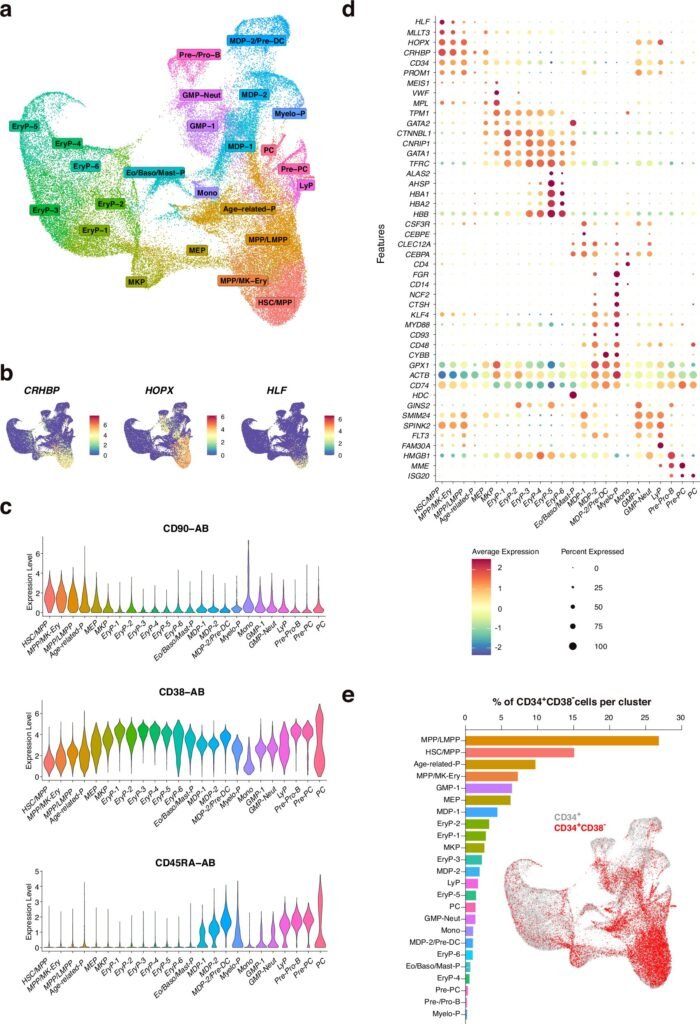Blood stem cells are crucial for the continuous generation of new blood cells in our bodies, replacing old or dying cells at a rate of approximately 5 million cells per second in adults. These stem cells undergo a complex process of differentiation in the bone marrow to give rise to various specialized blood cell types, including erythrocytes, platelets, and white blood cells that play a vital role in immune defense.
A recent study published in Nature Communications by an international research team led by Universitätsmedizin Frankfurt and Goethe University has shed light on the molecular pathways involved in the differentiation of human blood stem cells. By analyzing gene and protein expression patterns in over 62,000 individual cells using advanced sequencing methods and high-performance computing, the researchers uncovered new insights into the regulation of stem cell differentiation.
One of the key findings of the study was the identification of a surface protein called PD-L2 on blood stem cells. This protein has the unique ability to suppress the activation of immune responses, particularly the response of T cells, which are critical components of the immune system. PD-L2 helps prevent the activation and proliferation of T cells and inhibits the release of inflammatory cytokines, thereby playing a crucial role in dampening the immune response.
The discovery of PD-L2 on blood stem cells has significant implications for stem cell transplantations, especially those involving grafts from unrelated donors. By suppressing the immune response against transplanted stem cells, PD-L2 could help protect the stem cells from potential attacks by the recipient’s immune system. This finding highlights the importance of understanding the complex interplay between stem cells and the immune system in the context of transplantation and immune-mediated diseases.
Overall, this research provides valuable insights into the molecular mechanisms underlying blood stem cell differentiation and the role of surface proteins in regulating immune responses. The newly established technology used in this study offers a precise and detailed view of stem cell biology, paving the way for further discoveries in health research. By unraveling the mysteries of stem cell function, scientists hope to develop new strategies for enhancing stem cell therapies and improving outcomes for patients with a range of medical conditions.


